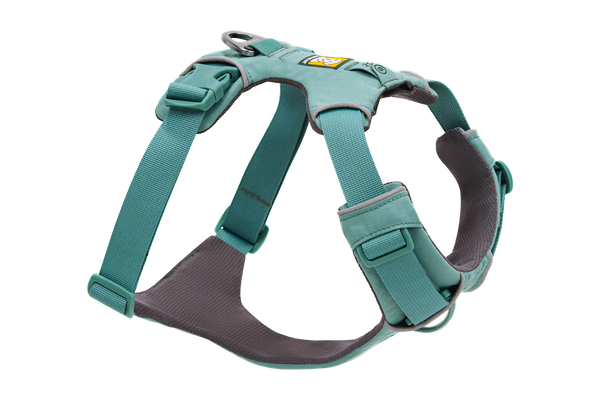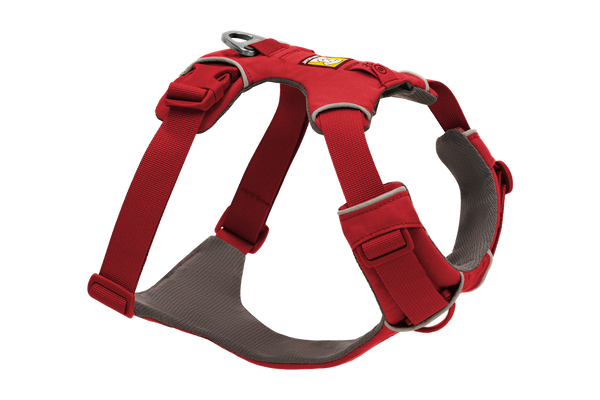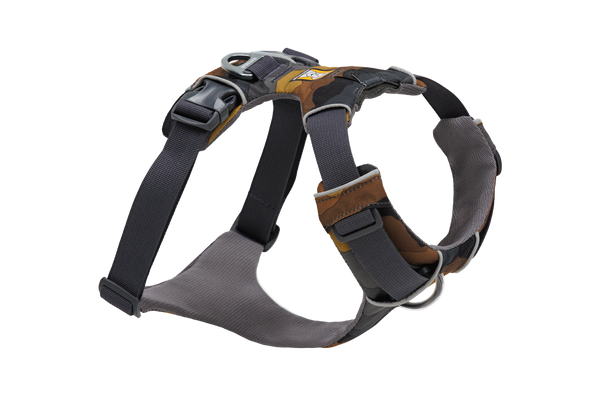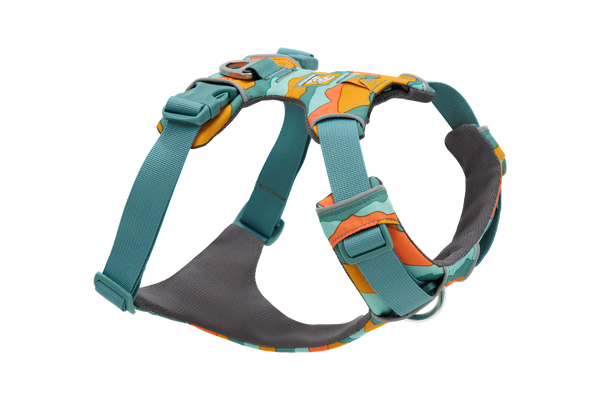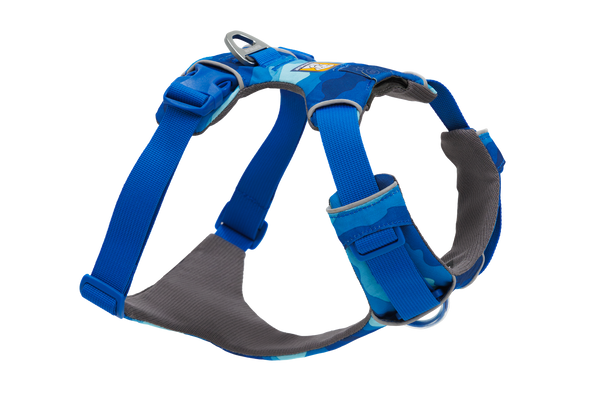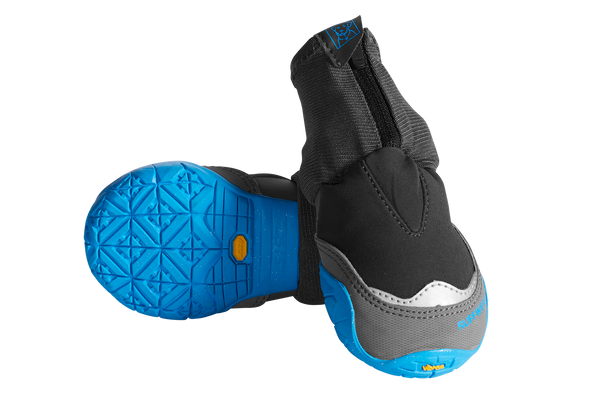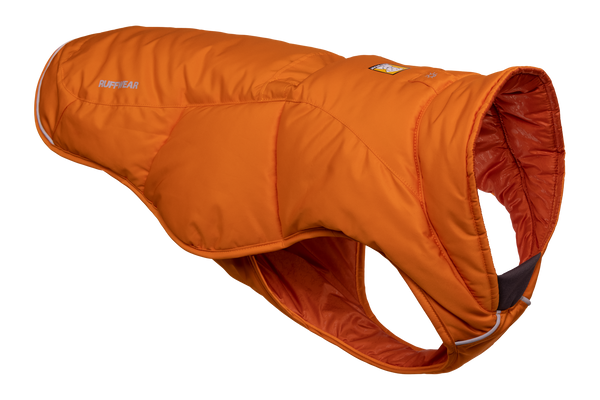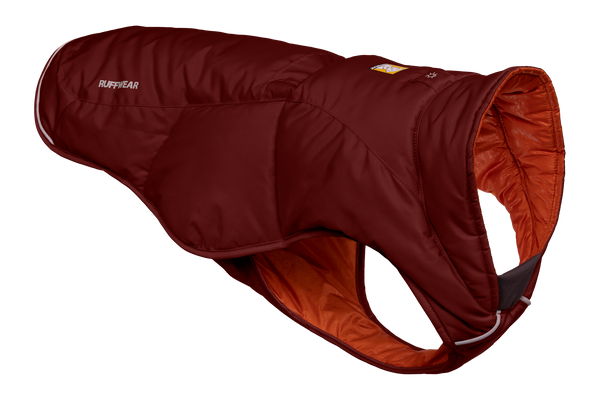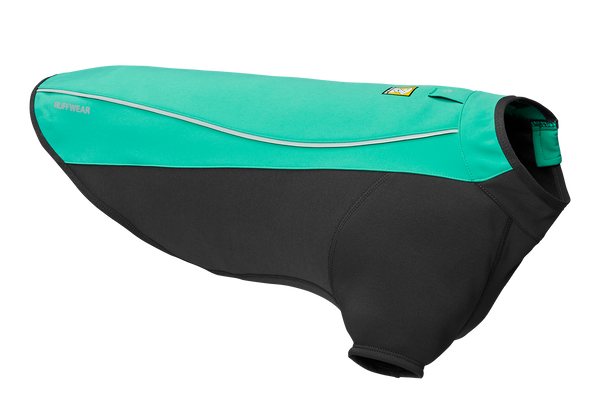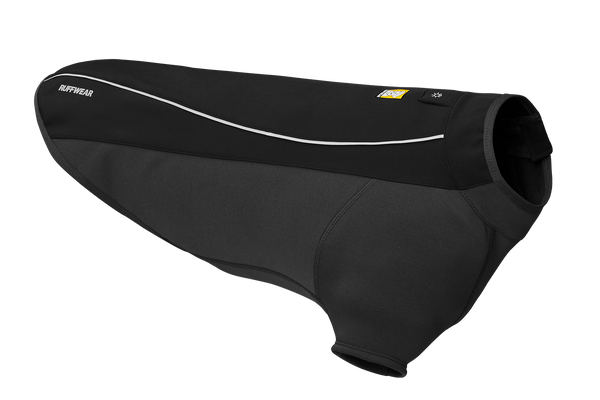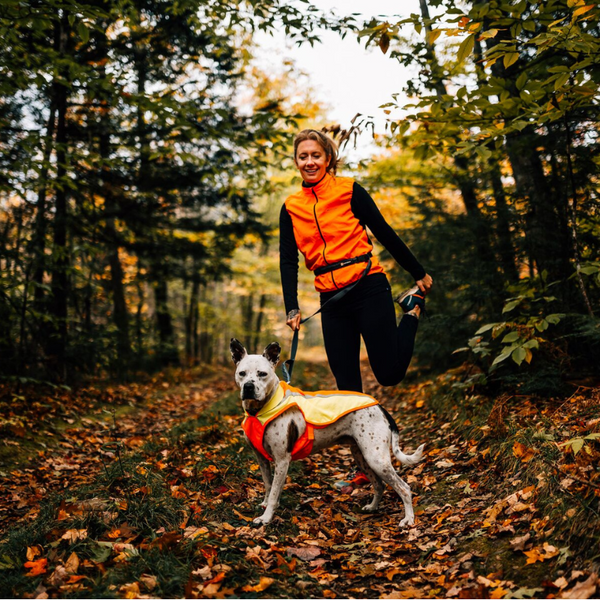Trip Tips: A Night in the Sawtooth Backcountry with Bronwyn & Arnie
Whether you're looking for backcountry magic or practical backpacking tips, Ruffwear Ambassadors Dr. Bronwyn Fullagar and sidekick Arnie pack both into their overnight trip report.
“Cheers!” We clinked our canned cocktails, grabbed another handful of chips and settled back on our sleeping pads to enjoy sunset over Alice Lake, in the alpine of Idaho’s Sawtooth Mountains.
Dani, her spotted dog Vilas, our friend Amy, my dog Arnie, and I had made a spur-of-the-moment decision to backpack the six miles into the remote backcountry campsite on a weekday evening last summer. We reached camp right at dusk and were able to set up our tents on a rocky outcrop overlooking the lake.

Alice Lake was postcard-perfect that evening - not a breath of wind, no bugs, and plenty of campsites with incredible views of the 10,000ft peaks around us.
While we enjoyed a twilight game of cribbage (Dani skunked us both), Arnie was on duty ensuring that our campsite was safe from ground squirrels, chipmunks, and deer. Vilas was making her best attempts to sneak back onto Dani’s lap to “help” with the cribbage game.

As the sun set behind the peaks and the lake turned from midnight blue to silver, we enjoyed dinner, Tim Tams (an outdoor adventure staple of mine) and started the process of squeezing two humans (me and Dani) and two dogs into a fastpacking bivy.
Dani and I had opted for her ultralight, ultra-small tent with the mindset that “it’s only one night”. Amy had cleverly packed her own tent, which she had set up a little ways across the campsite from where our circus was about to unfold.
Unsurprisingly, conditions were a little tight in our tent that evening. Vilas and Arnie each have their own Ruffwear sleeping bag. While Arnie seemed content to squeeze himself between our feet at the foot the tent, Vilas abandoned her own sleeping bag in favor of sleeping with half of her body on each of our pillows (I got the tail end). At least one of us was comfortable!

The following morning, we rose before dawn to get back into town in time for work. Arnie and Vilas (and Amy) were well rested and excited to get back on the trail. Dani and I were slightly less energetic, but the promise of Stanley Baking Company’s famous breakfast had us all striding with purpose back through the granite spires and scree slopes to the trailhead.
It had been a few years since I last went backpacking with Arnie. These days, we’ve gravitated towards long mountain runs and sleeping at a base camp.
This trip reminded me how special it is to camp in the backcountry, and how fortunate we are to have access to incredible public lands in some of North America’s most beautiful terrain.

As we were devouring enormous fresh cinnamon rolls back in Stanley, I thought about what I’d learned over the years from backpacking with Arnie. Here is some advice for those hoping to experience a night (or more) in the wilderness with their canine companions.
- Check for restrictions to dogs on the specific trails you plan to hike. Although dogs are allowed in most state parks in the US and most National Parks in Canada, there are some specific restrictions on certain trails, usually because of sensitive wildlife habitat or preserving water quality. Check the parks service website before you set off.
- Bringing a sleeping bag for your dog will ensure everyone gets a good night’s sleep. Spend a night or two in a tent with a cold, wet dog attempting to get into your sleeping bag and you’ll understand the value of a dog-specific one! The Highlands™ Sleeping Bag also doubles as a dog (or human!) mat or blanket for camp.
-
Be strategic about what you pack in your dog’s pack. Although your pup can help to carry some of their own gear, remember that a dog’s pack should not weigh more than 25% of your dog’s body weight. Also, be sure to keep all the truly essential gear (e.g. emergency communication, bear spray, first aid kit) with you, in case you and your dog become separated.

- A few examples of what I ask Arnie to carry: his food, treats, any wet or muddy gear (e.g. gaiters, dog boots) and any smelly items (e.g. garbage, poop bags).
- If your dog has a loaded pack, take care with off leash roaming. Be sure to check before you start your trip whether dogs are allowed off leash at all. If you decide to let your dog off leash, remember that a loaded pack will make them wider than they would normally be and may alter their balance. This can result in a dog getting stuck if they try to squeeze through a tight space and depending on the terrain it may be difficult for you to come to their aid.
- Monitor your dog for signs of heat stress and be sure to bring plenty of water. A good rule of thumb is that a dog will require 20ml per kg bodyweight, per 1 hour of exercise. This equates to about 700mL-1 litre for an average Labrador for a one hour hike, or 150-250mL for an average Shih Tzu. Higher intensity activity, hotter weather or higher humidity will increase water requirements more. Planning a trip that involves creek crossings or lakes can reduce the amount you need to carry and can give your pup a chance for a swim to cool off. For more tips on hot weather adventuring with your dog, check out this article.
- Stock your first aid kit with a few dog-specific items. I carry a standard human first aid kit when I backpack, but add the following equipment for Arnie:
-
- Dog boots: I carry 2-4 Grip Trex™ Boots, depending on the terrain and length of the adventure. If the terrain is smooth, two boots are handy to cover any injuries to the feet and lower legs. I carry four boots if we’re walking through scree or gravel in hot weather.
- Vetrap (Coban) and sterile dressings: Vetrap is a stretchy, self-adherent bandaging material. It is handy to place over a sterile dressing to cover minor injuries to the lower limbs and can double as an ace-bandage alternative for a human’s sprained ankle. It’s important to unroll the bandage before applying to a dog’s limb and apply loosely as the material tightens once it’s applied. Monitor the limb below the bandage closely for any swelling and remove the bandage immediately if this occurs. Seek veterinary advice as soon as you can.
- Backtrak™ Dog Evacuation Kit. In the case of a serious injury, this kit will allow you to safely and efficiently carry your dog to safety. It’s gear you’ll hope you never have to use, but could be the difference

Bronwyn's packing list for backpacking with Arnie:
- Dog first aid supplies (see above)
- Bowl (I love the Trail Runner™Bowl and Bivy™ Bowl)
- Dog boots (2-4)
- Warm layer (Arnie’s favorites are the Powder Hound™ Jacket and Climate Changer™ Fleece)
- Sleeping bag (Highlands™ Sleeping Bag)
- Sleeping pad (Highlands™ Sleeping Pad - extra insulation and padding for cold, hard ground)
- Food (bring 1.5-2x your dog’s usual daily food requirement for backpacking)
- Treats
- Water (see above)
- Cooling gear (Swamp Cooler™ Neck Gaiter and Swamp Cooler Core™ Pack Add-On)
- Harness or collar (if using a pack that does not detach from the underlying harness, I bring a Hi & Light™ Harness for Arnie to wear while tethered at camp)
- Leash (I love the Flagline™ Leash as I can clip it to my waist or to a tree at camp and it’s super light)
- Beacon™ Safety Light
- Poop bags (remember to leave no trace!)
Bronwyn combines her loves of veterinary surgery and the mountains, working as a specialist surgeon in clinics across North America and Australia, teaching surgery to other veterinarians and volunteering for animal charities overseas. When not working in the veterinary clinic, you can find Bronwyn and Arnie exploring the backcountry on foot or on skis – just listen for Arnie’s characteristic barks to go faster! Follow them @DRBRONFULLAGAR



